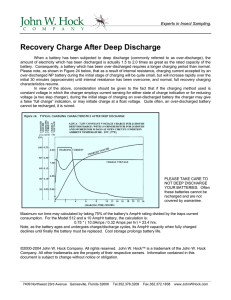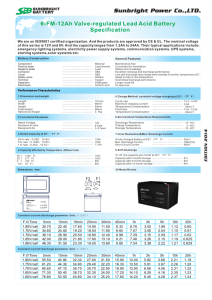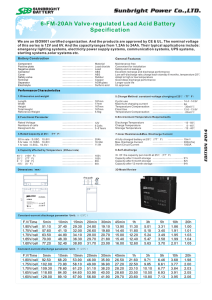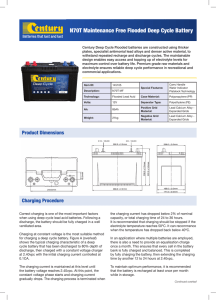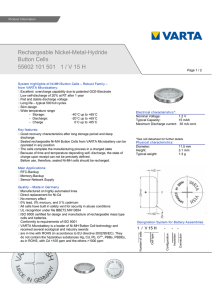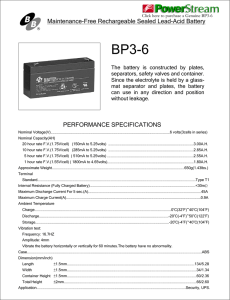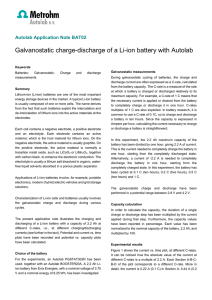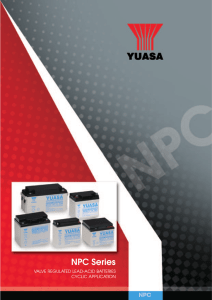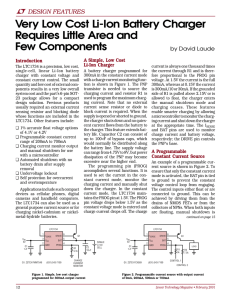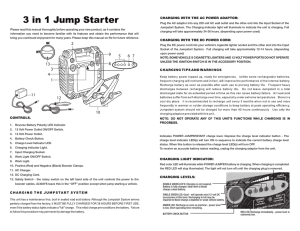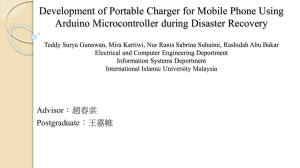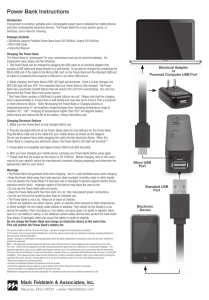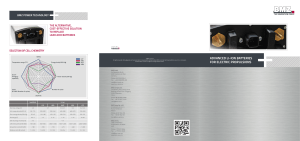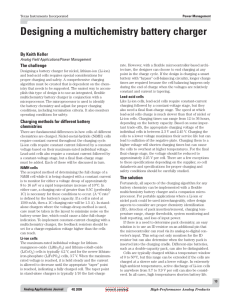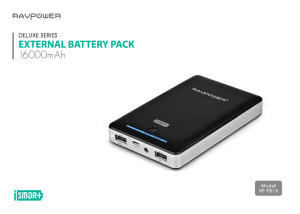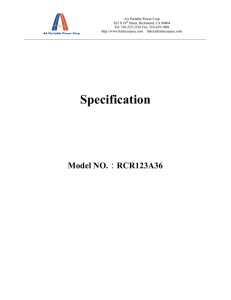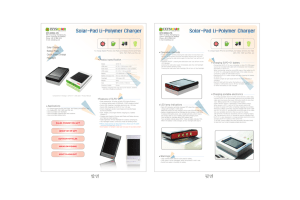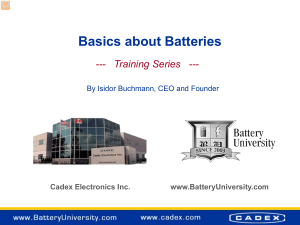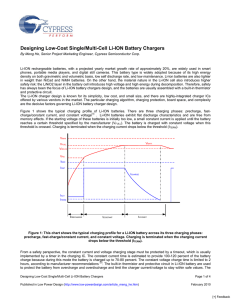Chapter 3 Battery Ch..
advertisement
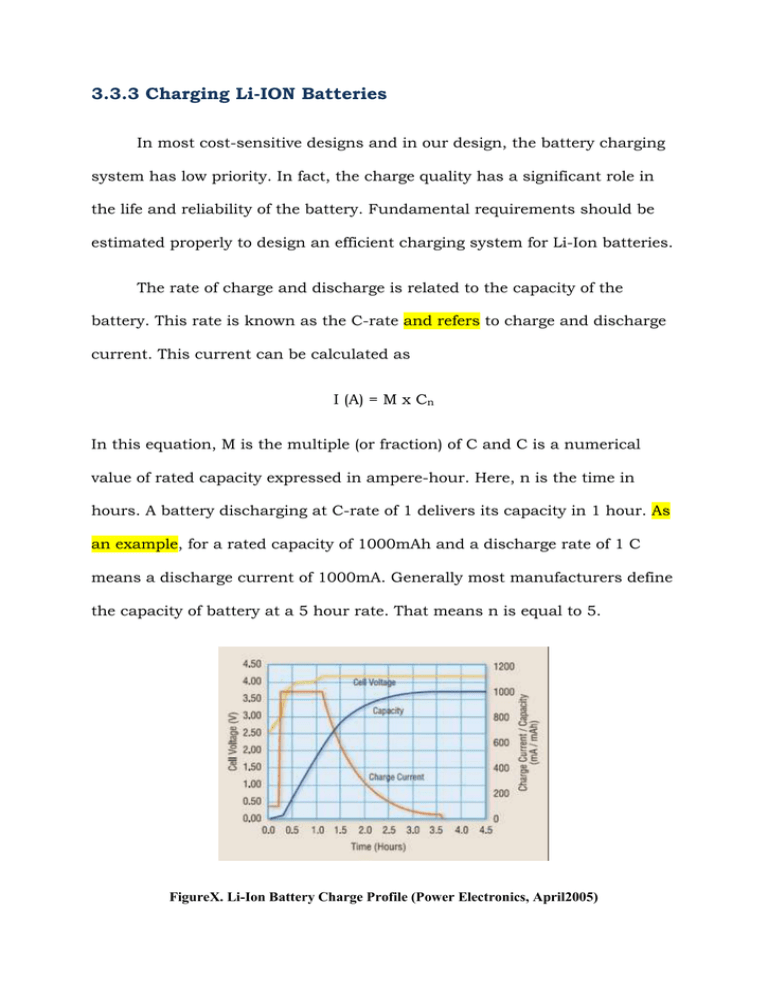
3.3.3 Charging Li-ION Batteries In most cost-sensitive designs and in our design, the battery charging system has low priority. In fact, the charge quality has a significant role in the life and reliability of the battery. Fundamental requirements should be estimated properly to design an efficient charging system for Li-Ion batteries. The rate of charge and discharge is related to the capacity of the battery. This rate is known as the C-rate and refers to charge and discharge current. This current can be calculated as I (A) = M x Cn In this equation, M is the multiple (or fraction) of C and C is a numerical value of rated capacity expressed in ampere-hour. Here, n is the time in hours. A battery discharging at C-rate of 1 delivers its capacity in 1 hour. As an example, for a rated capacity of 1000mAh and a discharge rate of 1 C means a discharge current of 1000mA. Generally most manufacturers define the capacity of battery at a 5 hour rate. That means n is equal to 5. FigureX. Li-Ion Battery Charge Profile (Power Electronics, April2005) Typically, there are two types of charging methods; a minimum charge current or a timer. Generally, charging is performed by one of these. However, in some applications, these methods can be applied together. The minimum current method approach controls the charge current during the constant voltage stage and stops the process by the time the charge current decreases in the range of 0.02C to 0.07C. In the timer method, charging continues for an additional 2hour then charge process would be terminated. For a safe charge, charge is halted when the cell temperature is outside of the specified window. Typically, for a Li-Ion battery, the window range is between 0°C (32°F) and 45°C (113°F). Generally, the cell temperature window is specified by cell manufacturers.

